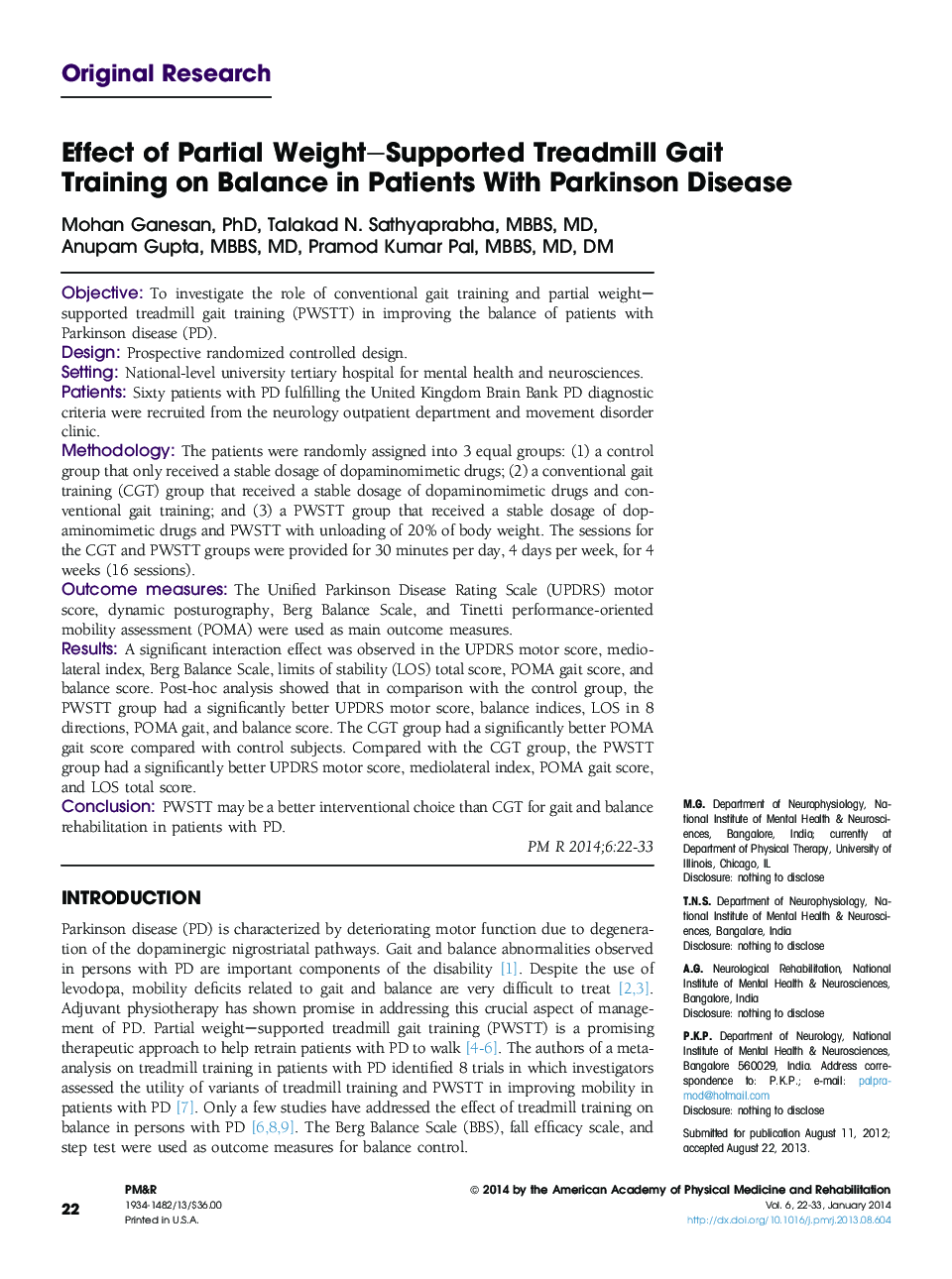| کد مقاله | کد نشریه | سال انتشار | مقاله انگلیسی | نسخه تمام متن |
|---|---|---|---|---|
| 2716040 | 1145332 | 2014 | 12 صفحه PDF | دانلود رایگان |
ObjectiveTo investigate the role of conventional gait training and partial weight–supported treadmill gait training (PWSTT) in improving the balance of patients with Parkinson disease (PD).DesignProspective randomized controlled design.SettingNational-level university tertiary hospital for mental health and neurosciences.PatientsSixty patients with PD fulfilling the United Kingdom Brain Bank PD diagnostic criteria were recruited from the neurology outpatient department and movement disorder clinic.MethodologyThe patients were randomly assigned into 3 equal groups: (1) a control group that only received a stable dosage of dopaminomimetic drugs; (2) a conventional gait training (CGT) group that received a stable dosage of dopaminomimetic drugs and conventional gait training; and (3) a PWSTT group that received a stable dosage of dopaminomimetic drugs and PWSTT with unloading of 20% of body weight. The sessions for the CGT and PWSTT groups were provided for 30 minutes per day, 4 days per week, for 4 weeks (16 sessions).Outcome measuresThe Unified Parkinson Disease Rating Scale (UPDRS) motor score, dynamic posturography, Berg Balance Scale, and Tinetti performance-oriented mobility assessment (POMA) were used as main outcome measures.ResultsA significant interaction effect was observed in the UPDRS motor score, mediolateral index, Berg Balance Scale, limits of stability (LOS) total score, POMA gait score, and balance score. Post-hoc analysis showed that in comparison with the control group, the PWSTT group had a significantly better UPDRS motor score, balance indices, LOS in 8 directions, POMA gait, and balance score. The CGT group had a significantly better POMA gait score compared with control subjects. Compared with the CGT group, the PWSTT group had a significantly better UPDRS motor score, mediolateral index, POMA gait score, and LOS total score.ConclusionPWSTT may be a better interventional choice than CGT for gait and balance rehabilitation in patients with PD.
Journal: PM&R - Volume 6, Issue 1, January 2014, Pages 22–33
